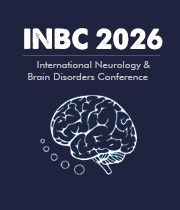Neuroprotective Agents
Neuroprotective agents are substances, usually drugs or compounds, that are used to protect the brain against damage caused by injuries, diseases, or aging. These agents help to reduce the risk of long-term neurological damage or even death by providing protection from chemical, physical, and other forms of neuronal harm. Common neuroprotective agents can be naturally-occurring, such as certain antioxidants, or they can be synthetic compounds. A variety of neuroprotective agents are available for use in a variety of different circumstances, depending upon the level of risk for damage as well as the desired outcome. The most commonly used agents are the glutamate antagonists, which are designed to inhibit excitotoxicity, a process associated with the buildup of calcium and other toxins within cells. This buildup can lead to cell death and further damage, making glutamate antagonists essential. The second most widely employed neuroprotectants are anti-inflammatory drugs, which block the activation of cells involved in the inflammatory response, often reducing the risk of tissue damage or death. Antioxidants have also been used, as these compounds can help reduce oxidative stress, another major contributor to neurological damage. In addition to these classes of neuroprotective agents, there are a host of other natural and synthetic compounds that have been studied and tested for their ability to reduce the risk of neuron damage. Cannabinoids, omega-3 fatty acids, and acetyl-L-carnitine have all been reported to have protective affects on neural cells. Nutritional supplements such as ubiquinol, creatinine, and alpha-lipoic acid have also been investigated for their potential to reduce neuronal damage. In the end, it is important for those at risk for neurological damage to discuss the use of neuroprotective agents with their physicians. With so many different options available, it is crucial for individuals to weigh the risks and benefits before making any long-term decisions about their brain health. In addition, consultation with a knowledgeable physician can help determine the most appropriate dose and type of neuroprotecting agent for a person’s individual needs.

Joe Sam Robinson
Mercer University, United States
Robert B Slocum
University of Kentucky HealthCare, United States
George Diaz
Memorial Healthcare Systems, United States
Daniel Curry
Texas Children’s Hospital, United States
Zhenhuan Liu
Guangzhou University Chinese Medicine, China
Kiran Ghotra
Lake Erie College of Osteopathic Medicine, United States




Title : Atypical presentation of Juvenile myoclonic epilepsy in a 16-year-old female: A Case Report
George Diaz, Memorial Healthcare Systems, United States
Title : What we don’t know about hydrocephalus and It’s management
Daniel Curry, Texas Children’s Hospital, United States
Title : Artificial intelligence-driven DWI and FLAIR for the detection of early stroke changes: A systematic review
Shari L Guerra, The Medical City, Philippines
Title : Mapping neuroplasticity in occupational therapy: Evidence-based interventions with measurable neural outcomes
Jessica Marchant, Texas Woman's University, United States
Title : Non-pharmacologic management of orthostatic hypotension in inpatient rehabilitation: A quality improvement initiative
Laura Steakin, Rehabilitation Institute at Sinai, United States
Title : Non-pharmacologic management of orthostatic hypotension in inpatient rehabilitation: A quality improvement initiative
Mackenzie Weber, Rehabilitation Institute at Sinai, United States